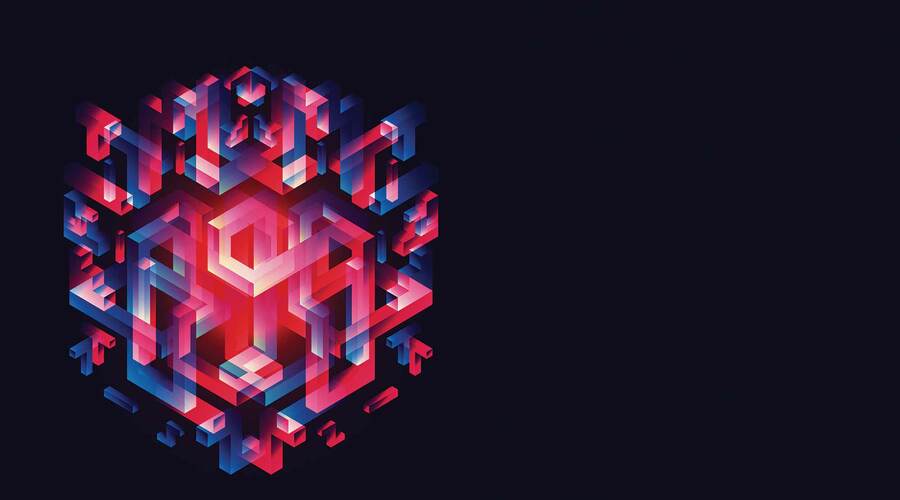The healthcare industry is witnessing a significant transformation with the advent of innovative technologies. Two such groundbreaking technologies, blockchain and the Internet of Things (IoT), are revolutionizing healthcare by improving security and efficiency in managing medical devices and patient data. This article explores the intersection of blockchain and IoT in healthcare, focusing on the importance of securing medical devices and patient data in the digital age. Introduction In today’s digital era, healthcare providers and organizations are increasingly leveraging advanced technologies to enhance patient care, streamline operations, and secure sensitive data. Blockchain and IoT are two emerging technologies that have the potential to address critical security challenges in healthcare systems. Understanding the fundamental concepts of blockchain and IoT is essential to grasp their impact on healthcare security. Understanding Blockchain Technology Blockchain technology is the underlying foundation of cryptocurrencies like Bitcoin, but its potential extends far beyond digital currencies. At its core, blockchain is a decentralized and immutable digital ledger that records transactions in a secure and transparent manner. Key features of blockchain, such as decentralization, immutability, and transparency, make it suitable for various industries, including healthcare. In healthcare, blockchain can provide a tamper-proof and auditable record of medical transactions, ensuring data integrity and traceability. It can facilitate secure sharing of medical records among healthcare providers while preserving patient privacy. By eliminating intermediaries and enabling peer-to-peer transactions, blockchain can streamline processes, reduce costs, and enhance efficiency in healthcare systems. IoT in Healthcare The Internet of Things (IoT) refers to a network of interconnected physical devices embedded with sensors, software, and network connectivity. In the healthcare sector, IoT devices play a vital role in collecting real-time data, monitoring patient health, and improving the overall quality of care. From wearable fitness trackers to smart medical devices, IoT has the potential to revolutionize healthcare delivery. IoT devices in healthcare enable remote patient monitoring, early disease detection, and personalized treatment plans. These devices collect vast amounts of sensitive data, including vital signs, medication adherence, and patient behavior. However, the security of these devices and the data they generate is a critical concern, necessitating innovative solutions to protect patient privacy and ensure data integrity. The Intersection of Blockchain and IoT in Healthcare The convergence of blockchain and IoT in healthcare presents numerous opportunities to enhance security and trust in medical devices and patient data. By integrating blockchain technology with IoT devices, healthcare organizations can establish a secure and transparent system for collecting, storing, and sharing patient data. One of the key advantages of combining blockchain and IoT is improved security. Blockchain’s decentralized nature eliminates single points of failure and reduces the risk of unauthorized access or data manipulation. IoT devices connected to the blockchain can authenticate and encrypt data, ensuring its integrity throughout the entire data lifecycle. This combination strengthens the security of medical devices and safeguards patient information against cyber threats. Securing Medical Devices with Blockchain and IoT Medical devices are essential for accurate diagnosis, monitoring, and treatment. However, they are susceptible to cyberattacks and unauthorized access, posing significant risks to patient safety and data privacy. Blockchain and IoT can mitigate these risks by enhancing the security of medical devices. The use of blockchain technology can establish a secure and auditable supply chain for medical devices, ensuring the authenticity and quality of these devices. With blockchain, healthcare providers can verify the origin and maintenance history of medical devices, reducing the risk of counterfeit or compromised devices entering the market. Additionally, IoT devices integrated with blockchain can leverage decentralized consensus mechanisms to authenticate and validate data generated by medical devices. This ensures that the data collected from these devices is accurate, reliable, and tamper-proof, thereby enhancing the overall quality of patient care. Protecting Patient Data with Blockchain and IoT Patient data security is a paramount concern for healthcare organizations. Traditional centralized databases are vulnerable to cyberattacks and data breaches. Blockchain technology offers a decentralized and secure solution for protecting patient data. By leveraging blockchain, healthcare providers can establish patient-centric data management systems that grant individuals control over their health records. Blockchain’s cryptographic techniques and distributed architecture make it extremely difficult for unauthorized entities to access or modify patient data. Patients can securely share their medical information with authorized healthcare providers while maintaining privacy and control. Enhancing Transparency and Trust Transparency and trust are essential components of efficient healthcare systems. Blockchain technology can address these requirements by providing an auditable and transparent record of medical transactions. With blockchain, healthcare organizations can ensure the integrity and authenticity of medical data, such as clinical trials, medical research, and pharmaceutical supply chains. By recording transactions on an immutable ledger, blockchain enhances transparency and accountability, reducing the risk of fraud and manipulation. Furthermore, patients can have increased trust in healthcare providers when they have visibility into the usage and sharing of their data. Blockchain technology empowers patients by allowing them to track and monitor who accesses their medical records, enhancing transparency and building trust between patients and healthcare providers. Overcoming Implementation Challenges By proactively addressing these implementation challenges, healthcare organizations can unlock the potential of blockchain and IoT in securing medical devices and patient data. With careful planning, collaboration, and ongoing evaluation, these technologies can revolutionize healthcare by improving security, efficiency, and patient outcomes. Future Trends and Possibilities The future of blockchain and IoT in healthcare holds immense potential for transformative advancements. As these technologies mature and become more widely adopted, several trends are likely to shape their evolution. Interoperability among different blockchain networks and IoT platforms will continue to improve, enabling seamless data exchange and integration. This will facilitate the development of comprehensive patient profiles and personalized treatment plans based on real-time data from multiple sources. The integration of artificial intelligence and machine learning with blockchain and IoT will enhance predictive analytics and enable proactive healthcare interventions. Conclusion In conclusion, the integration of blockchain and IoT in healthcare holds immense potential for securing medical devices and patient data while revolutionizing the way healthcare is delivered. By combining these technologies, healthcare…








